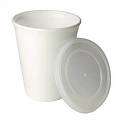| In your jotter write the DATE in the margin. Now add a TITLE for your homework. Your title should be the name of the Homework: Heat Homework Wk 6 |
Two multi-choice revision tests have been created to help you check your learning. Click on the links to access the tests. Each test has a link to the answers.
Heat is a form of energy. If a substance gains heat energy its temperature rises. Temperature is a measure of how hot (or cold) a substance is.
Heat flows through a solid by conduction. The heated particles vibrate faster and the vibrations are passed from particle to particle along the solid.
A material that lets heat flow through it easily is a good conductor of heat. Metals are good conductors of heat. The bottom of a pot may be made of a metal, such as copper, iron or aluminium, which lets heat flow quickly from the cooker to the food inside.
A material which does not let heat flow through it easily by conduction is an insulator of heat. The handle of a pot is likely to be made of wood or plastic so that heat from the cooker will not burn your hand.
Air is a bad conductor and is used for insulation. The warmest clothing uses trapped air to prevent body heat from escaping. Double-glazed windows have a layer of trapped air between two panes of glass, and polystyrene cups are used for hot drinks because polystyrene contains bubbles of trapped air.
We use insulating materials to prevent heat loss from our homes. Examples include cavity wall insulation, loft insulation and draught excluders.
Heat flows through liquids by convection currents. The heated liquid expands as the particles speed up and push each other further apart. This makes the heated liquid less dense than the surrounding liquid and it begins to rise. Cooler liquid is pulled in to replace it and a convection current is set up. Kettles and pots heat liquid by convection.
Heat also flows through gases by convection currents.
Heat energy is transferred in straight lines in all directions by radiation.
The Earth is warmed by heat radiation from the Sun.
Heat rays are also known as infrared rays. A thermogram uses infrared radiation to take a heat picture of a person’s body. Areas of different temperature show up as different colours. Cancerous cells can be detected as they are slightly hotter than the surrounding tissue. The police also attach infrared cameras to helicopters to look for criminals at night or people lost in the mountains.
Black or dull surfaces radiate heat better than white or shiny surfaces. People prefer radiators to be white but they would radiate better if they were painted black!







